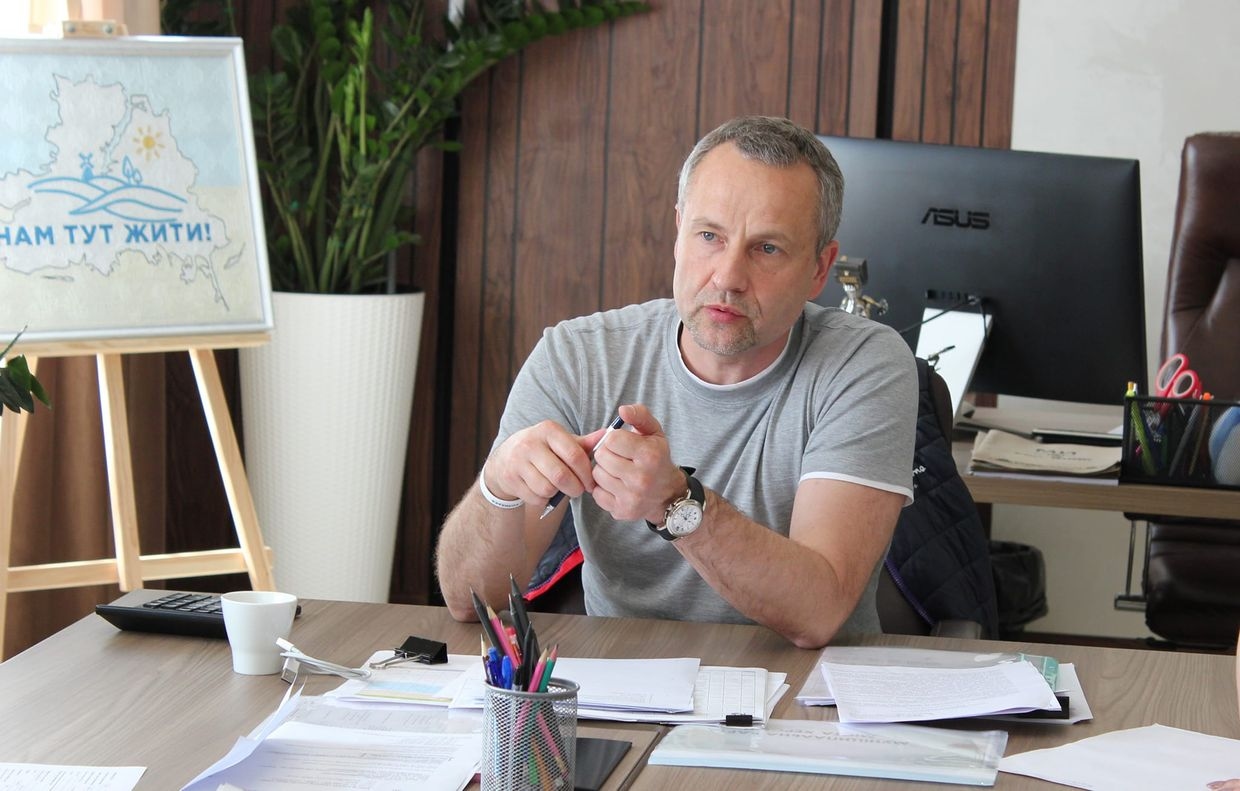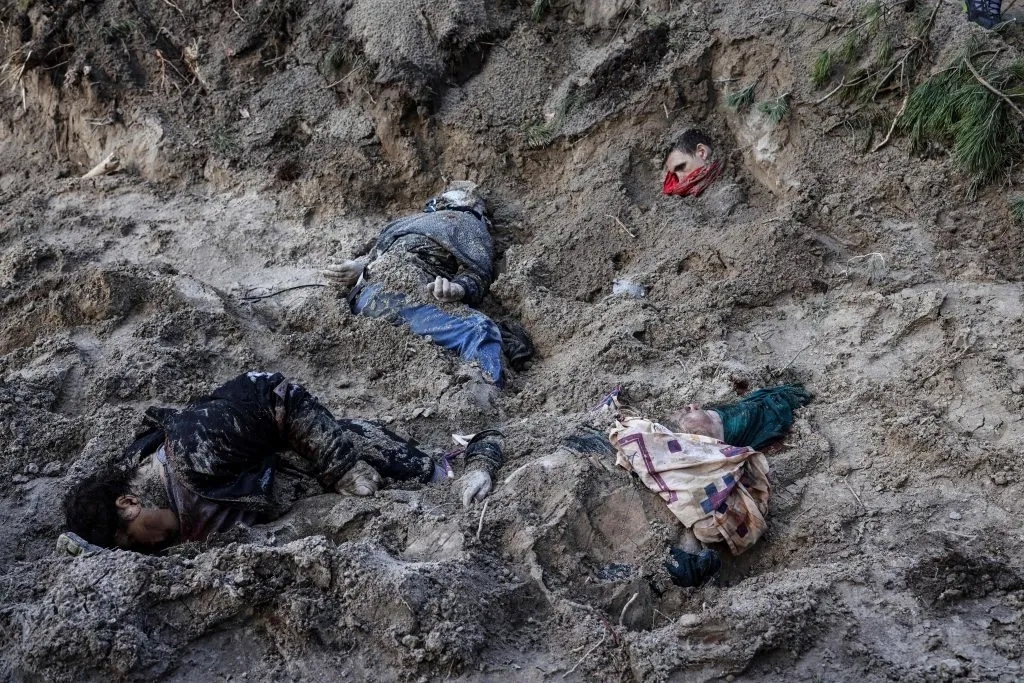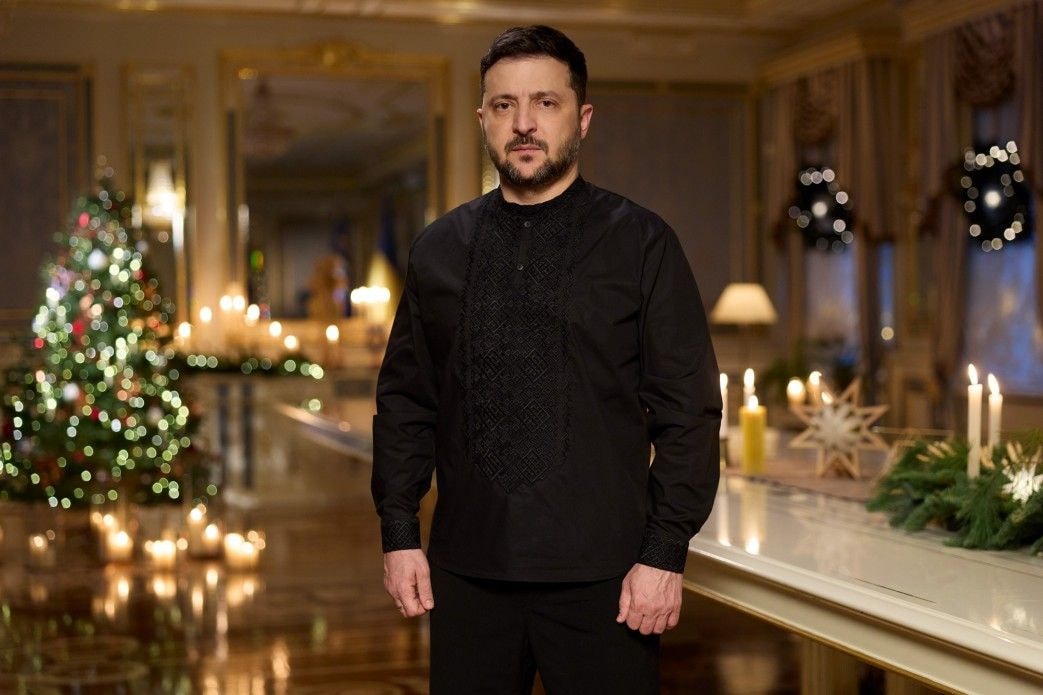
How Russia targets, detains and kills Ukrainian officials in occupied regions
For illustrative purposes: Officers of the War Crimes Prosecutor's Office and police officers investigate war crimes committed by the Russian occupying forces on the local civilian population in the basements and rooms of Ukrainian penitentiary buildings on Jan. 4, 2023, in Kherson, Ukraine. (Photo by Pierre Crom/Getty Images)
For Volodymyr Mykolaienko, the former mayor of Kherson, this year’s Independence Day became a second birthday — he regained his freedom after over three years in Russian captivity on Aug. 24.
“For the past few years, I haven’t seen anything but bars and concrete walls,” Mykolaienko told journalists upon his release.
“I always wondered what my second birthday would be like, and it turned out beautifully that it fell on Aug. 24.”
Shortly after the full-scale invasion began in 2022, 65-year-old Mykolaienko — who served as Kherson’s mayor from 2014 to 2020 — joined a local territorial defense volunteer group to support residents who chose to remain in his hometown despite the looming Russian occupation.
Kherson was under occupation for nearly nine months, until it was liberated by Ukraine’s Armed Forces in November 2022.
According to his niece Hanna Korshun-Samchuk, Mykolaienko was detained by Russian forces on April 18, 2022. She says he was targeted for his pro-Ukrainian views and that Russian troops later tried, unsuccessfully, to pressure him into cooperating.
“The former mayor knows the city inside out — its people, its networks, everything. He refused to cooperate with the occupiers. He’s strongly pro-Ukrainian, and for them, that made him a nationalist enemy,” she told the Kyiv Independent in May.
For more than three years, his relatives only knew he was being held in a Russian detention facility in Pakino, Vladimir Oblast.
When he was released in August, Mykolaienko’s appearance had changed drastically — he had lost significant weight due to starvation in Russian captivity.
Experts believe that Russia’s targeting of Mykolaienko wasn’t personal — it was an attack on the very institution of local government.
Since the start of the full-scale invasion, Russian forces have abducted or unlawfully detained around 133 Ukrainian officials, the majority from Kherson Oblast, according to Borys Petruniok, an analyst at the Zmina Human Rights Center. At least six remain in captivity to this day.
According to Petruniok, when occupying a new settlement, Russian forces deliberately target Ukrainian officials who remain loyal to their country and try to continue their duties despite the threats.
“In order to establish an occupation administration, Russia tries to destroy the legitimate bodies of government and self-governance,” Petruniok told the Kyiv Independent.
"From education and culture to currency and governance, they were building their own system — and anyone who stood in the way had to be removed."
Another mayor in captivity
Mykolaienko is not the only Kherson mayor who was captured by Russians. Ihor Kolykhaiev, who was serving as the acting mayor when Russia occupied Kherson, remains in Russian captivity to date.
Kolykhaiev was captured by armed Russian officers, likely members of the FSB (Federal Security Service), on the morning of June 28, 2022, when he arrived at a local government building — one of the few still operating after Russian troops seized control of Kherson and took over the city hall.
It was where the remnants of his team continued their work under Russian occupation.
Shortly after that, his advisor, Halyna Liashevska, wrote on Facebook that she was certain Kolykhaiev’s abduction was linked to his refusal to cooperate with Moscow-installed authorities.
“A few days earlier, he received a letter from the 'newly appointed' mayor, inviting him to discuss future ‘coordination.’ He was threatened with arrest if he declined the meeting. Kolykhaiev didn’t go,” Liashevska wrote.
Kolykhaiev did not consider leaving Kherson when the full-scale invasion started, says his son Sviatoslav.
Many of his colleagues also remained in the city, including those responsible for humanitarian aid, utilities, electricity, and gas supplies. They did everything they could to keep Kherson functioning, says Sviatoslav, who fled the occupied city with his mother in April 2022.
Kolykhaiev remained vocal, regularly speaking about the situation in the city in interviews with Ukrainian and international media.
“I remain in Kherson and have no intention of leaving,” Kolykhaiev wrote on Facebook in early June 2022, just days before his abduction. “I want to ask the residents who are able to read this to pass it on to others: I’m in the city, I’m with you, and I will not abandon you under any circumstances. Things are very difficult. Catastrophically hard. But the city will endure — thanks to all of us who want our city to live!"
Though he doesn’t know the full details, Sviatoslav says his father was pressured to cooperate with Russian-installed authorities in the region, such as Volodymyr Saldo, a Ukrainian politician turned top Russian proxy in the occupied part of Kherson Oblast.
Kolykhaiev refused to cooperate, says his son: “He regularly reported to Kyiv. He was in contact with the President’s Office, as far as I know. They were having some kind of dialogue, and he was receiving certain instructions.”

Unlike Kolykhaiev, members of his team who were also captured were released in around three months.
“They were interrogated about the city council’s activities and the mayor. Russian troops tried to push the narrative that they were forming illegal armed groups,’” Sviatoslav says.
“When my father was detained, the Russian channels posted one message saying the mayor had been arrested, without details. That was it, and in the three years since, that’s the only official news from the Russian side.”
Those who escaped Russian captivity told Sviatoslav that his father was transferred to multiple locations, including Kalanchak, followed by Chaplynka, and Novotroitske in Kherson Oblast.
In September 2023, the International Committee of the Red Cross (ICRC) officially confirmed Kolykhaiev’s prisoner of war (POW) status. Sviatoslav says his father was held at the Taganrog detention facility, which is notorious for torturing prisoners. The last known location of his detention is in the Russian Perm Oblast.
“His health is bad, mentally and physically. He can’t stand due to a leg injury and has received some medical treatment,” Sviatoslav says.
Systematic and coordinated violations
Russian forces have been going after local officials — mayors, village heads, and other community leaders — since the very beginning of the full-scale invasion, according to Petruniok.
“These people held power and influence in their communities. They had access to information and networks, which made them targets. Russians came for them first, even for former officials or family members perceived as influential,” he says.
Since spring 2022, detentions of local officials in Russian-occupied areas of Ukraine have become “systematic and coordinated,” with the cases in Zaporizhzhia and Kherson oblasts overseen by Russia’s FSB, Zmina Human Rights Center wrote in its latest report.
These detentions aimed to extract information and exploit the officials’ administrative skills, probe their political views to identify anti-Russian sentiment, and, most often, pressure them into collaboration, according to Zmina.
Officials in custody were frequently kept in isolation, including solitary confinement. Some were coerced into leaving their communities, while others were barred from doing so, extending the pressure, often to get some information from them. In some cases, they were forced to “resign” through falsified statements.
Harsh detention conditions and mistreatment left some physically incapable of resuming their duties, according to Zmina.
In addition to Kolykhaiev, at least five other Ukrainian officials from now occupied areas remain in Russian captivity. Among them is Oleksandr Babich, the 57-year-old mayor of Hola Prystan, an occupied town in Kherson Oblast.
Babich was detained by Russian forces at his home on March 28, 2022, interrogated in the city council building in front of colleagues and pressured to cooperate, according to Zmina. He is reportedly being held in Russian-occupied Crimea.
Anatolii Siryi, the head of Novi Borovychi village in Chernihiv Oblast, was also detained by Russian forces in March 2022 following a search of his home. According to Zmina, he was beaten during interrogation. His current whereabouts remain unknown.
There are also no details about the current whereabouts of Mykola Maslii, a member of the Kupiansk city council in Kharkiv Oblast and an entrepreneur, following his arrest by Russian forces at a pro-Ukrainian rally in Kupiansk on March 1, 2022.
Besides those held captive, Russian forces have also killed at least four Ukrainian officials — and in some cases, members of their families — during the occupation of new settlements since 2022.
Olha Sukhenko, the head of Motyzhyn village in Kyiv Oblast, was abducted from her home and killed along with her husband and youngest son in late March 2022. Sukhenko had openly expressed pro-Ukrainian views and provided humanitarian aid to local residents.
Their bodies were discovered in a forest near Motyzhyn shortly after Ukrainian forces liberated Kyiv Oblast in April 2022. Sukhenko’s hands were tied, indicating she was likely tortured, according to Zmina.
“Such violations are systematic in nature and should be viewed as part of a broader policy bearing the characteristics of international crimes — according to the norms of international humanitarian, criminal, and human rights law,” reads the report.
Petruniok believes that detentions of Ukrainian officials are driven by Russia’s goal to establish its own system of governance, an occupation administration to implement its policies. This ultimately led to Russia’s illegal annexation of parts of Kherson, Zaporizhzhia, Donetsk, and Luhansk oblasts.
“Local government workers and officials were targeted because they embodied legitimate authority. It wasn’t just about harming individuals — it was an attack on the very institution of local self-government and governance itself.”
Note from the author:
Hi! Daria Shulzhenko here. I wrote this piece for you. Since the first day of Russia's all-out war, I have been working almost non-stop to tell the stories of those affected by Russia’s brutal aggression. By telling all those painful stories, we are helping to keep the world informed about the reality of Russia’s war against Ukraine. By becoming the Kyiv Independent's member, you can help us continue telling the world the truth about this war.















